Designing Solo, a new U2F/FIDO2 Token
For the past couple years, I’ve been selling U2F tokens on Amazon. I’ve been selling an average of 150 units per month and have ordered multiple batches over the past two years.
Due to recent developments with FIDO2, WebAuthn, and various features people have been requesting, I’ve started an upgrade for U2F Zero. A couple collaborators and I have decided to call it Solo (or Solo Key). It is the sole thing you need to secure your accounts :).
Update: Production for Solo has been funded by Kickstarter and we are live with sales :).
What is U2F or FIDO2?
U2F is a standard for two factor authentication. Many websites like Twitter, Google, Facebook, etc, support it. After you enter password, you insert token, press button, log in. It provides very strong protection against account theft and phishing, much more then SMS or time-based codes.
FIDO2 is an upgrade to the U2F standard and is planned to have even more ubiquity. FIDO2 is planned to be used as a password replacement. On some services, like Windows 10, you can already use it in place of a password.
Solo
The original U2F Zero was just a plain circuit board that only did U2F over USB. Solo will have the following features.
- USB-A and USB-C option
- NFC support for mobile devices
- Flexible + durable case that embeds a tactile button
- Various color options
- FIDO2 protocol support
- Easy, web-based secure update process
- Good documentation for everyday users
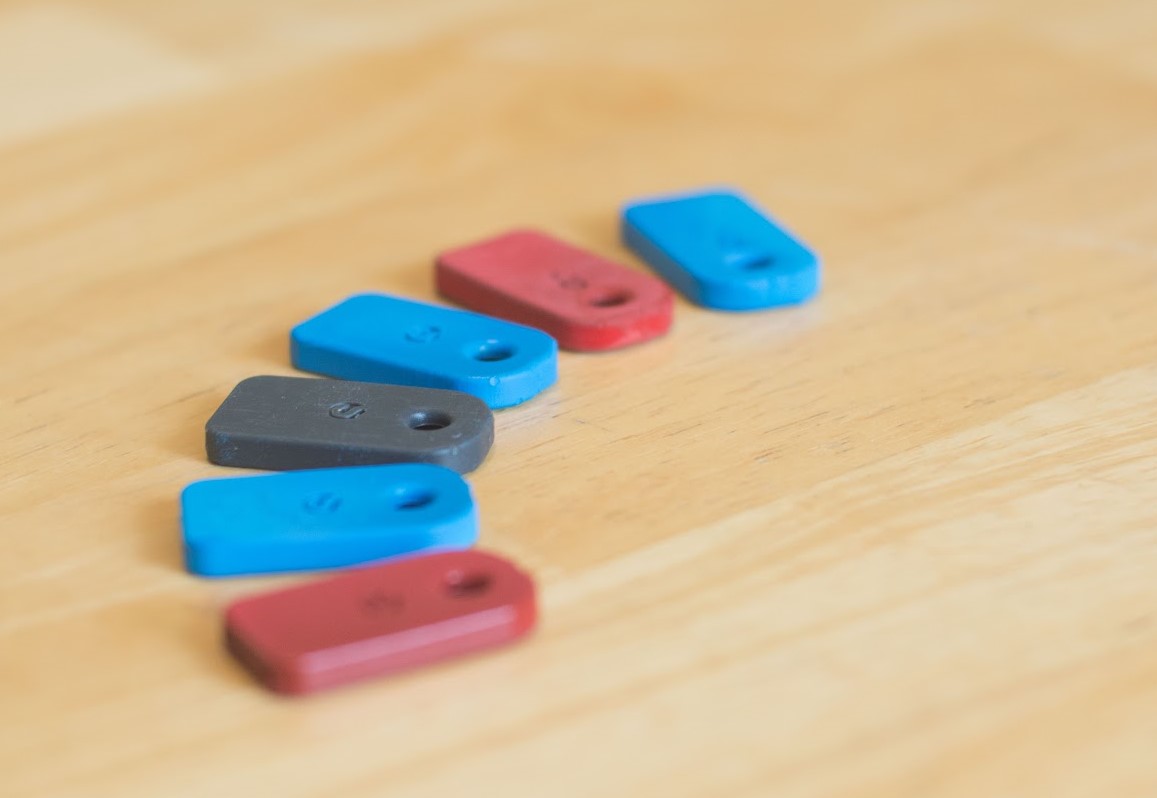
And of course, everything will soon be open sourced like with U2F Zero.
Design
Development started completely in software, no hardware, to make sure it could be easily contributed to by others. Most coding and testing can be done solely on a PC, while being designed to be easily ported to other chips, like the NRF52840 by Nordic Semiconductor and EFM32J by Silicon Labs.
PC-only testing is achieved by patching Yubico FIDO2 Python API to exchange messages with a PC application instead of a USB HID device.
After verifying a "first draft" of the FIDO2 implementation, I ported the design to an NRF52840 development board and to a Silicon Labs EFM32J development board.
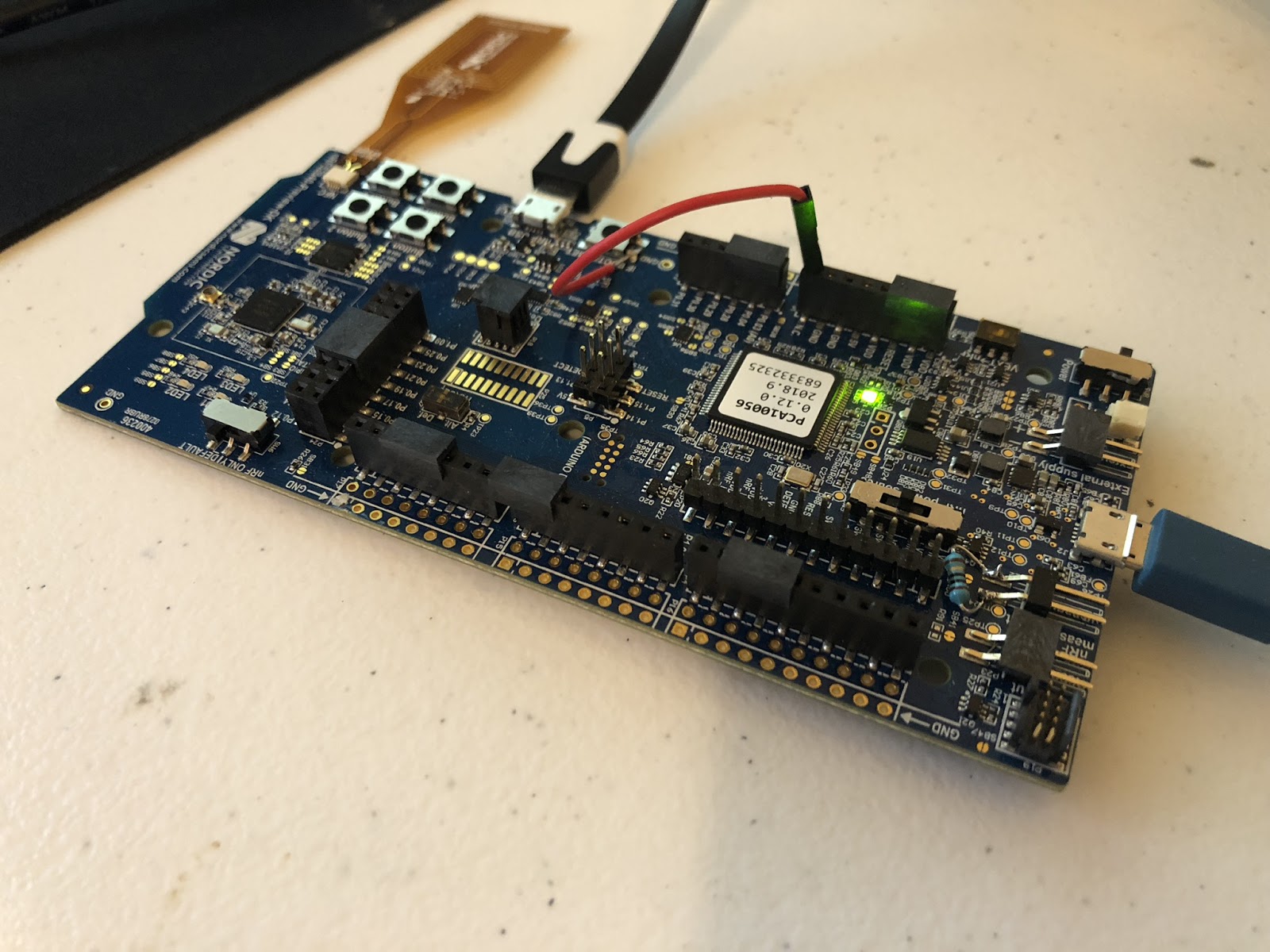 NRF52840 Bluetooth, NFC, USB SoC
NRF52840 Bluetooth, NFC, USB SoC
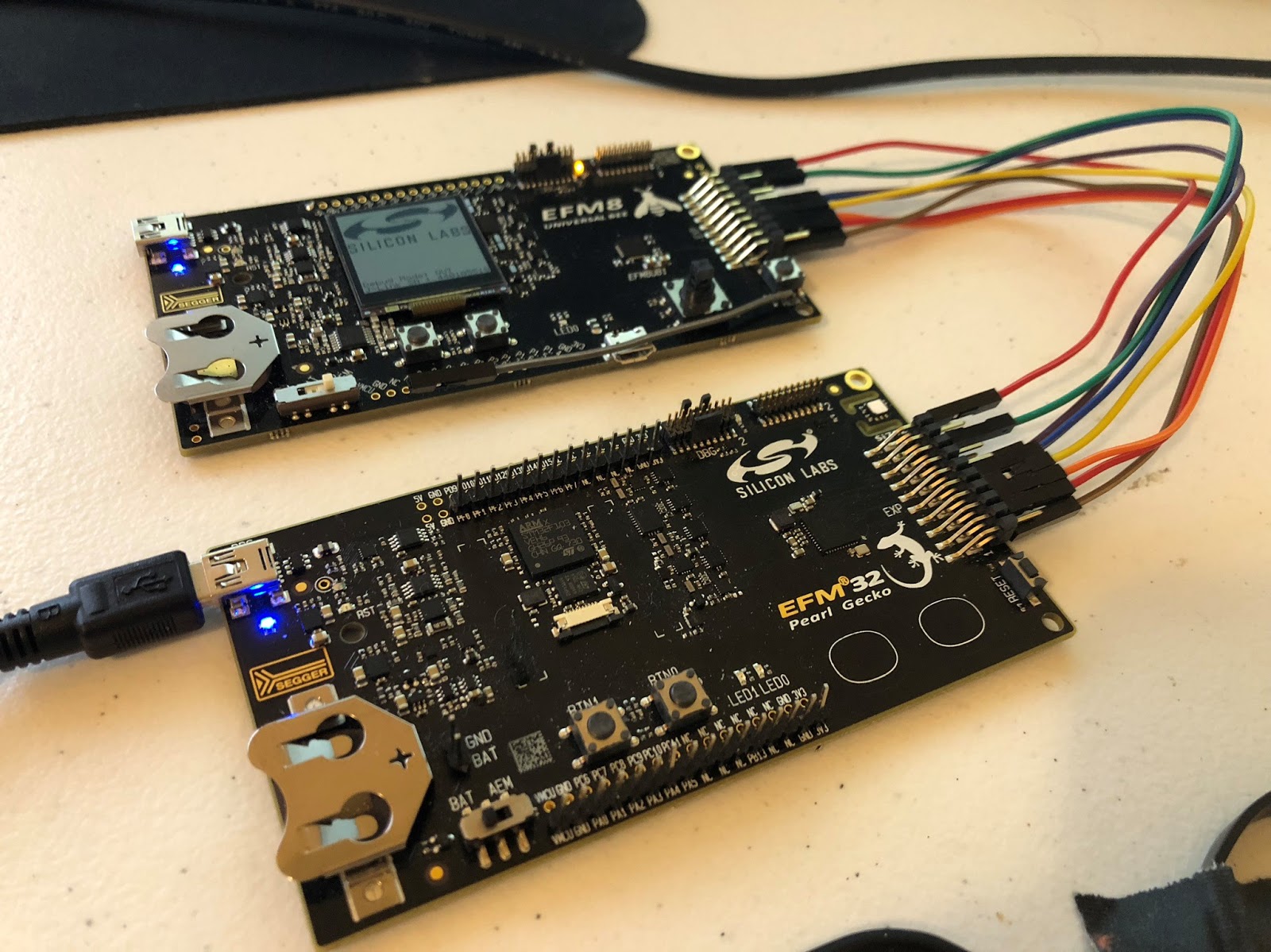 EFM32J + EFM8UB1
EFM32J + EFM8UB1
I ultimately decided to go with the EFM32J. It consumes less power, is much cheaper, and is easier to solder (QFN32 vs BGA). NRF52840 initially seemed like a great solution since it has everything in 1 chip, but it brings more complication and cost. Plus it would make it much harder for people to solder their own Solo key.
The design is modular in that USB and NFC support is added by adding another chip. The EFM8UB1 provides the USB HID interface, and the AMS 3955/3956 provides the passive NFC interface. NFC also requires a coil, which will be an external coil that lies flat next to circuit, all in case. More on this later.
Hardware key isolation
Providing some sort of hardware isolation for secret key material is hard since most of the chips on the market that can do that, require a NDA and that the company be a bank, government, or other reputable entity.
There are the ATECC508A and ATECC608A crypto chips, which can be obtained easily. U2F Zero actually uses the ATECC508A for key isolation and crypto acceleration. But since U2F/FIDO2 devices need to derive secret keys at runtime to be able to work with an unlimited number of services, the ATECC508A doesn’t work out well. This is because to derive a key at runtime, you typically need to compute an HMAC that’s keyed with a master secret, and store the result as the runtime key. This needs multiple interactions with the ATECC508A and requires the runtime key be stored temporarily on the MCU, which tarnishes the idea of key isolation.
I’m not aware of any other attainable crypto chips that can do better than this.
It’s best to keep the design simple rather than lob in a security chip that isn’t a good fit. The main threat is adverse software on the computer you plug your token into. Solo’s firmware isn’t complex, so it is reasonable to try to avoid buffer overflows and similar exploits. If a critical bug is found, a signed update process is supported so it can easily be patched. This model generally works well in industry (Trezor, the popular bitcoin wallet, is successful with this approach) and greatly simplifies the design of Solo.
Hardware design
Previously I’ve only used Kicad for PCB layout, to include the design of U2F Zero. For Solo, I basically did a token design in Kicad, Eagle, and Circuit maker to figure out what is best. I stuck with Eagle in the end, because of the nice integration with Fusion360, which really helps the mechanical design.

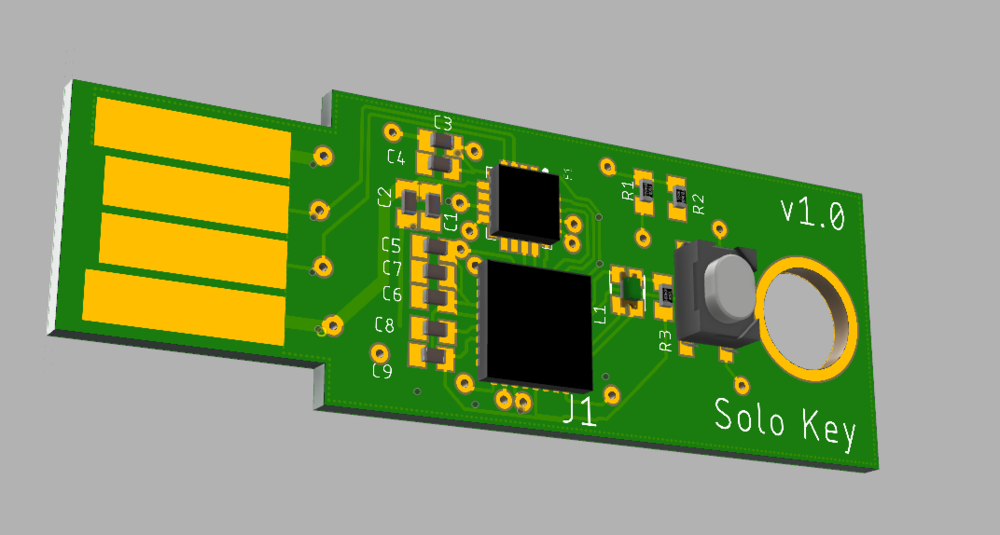



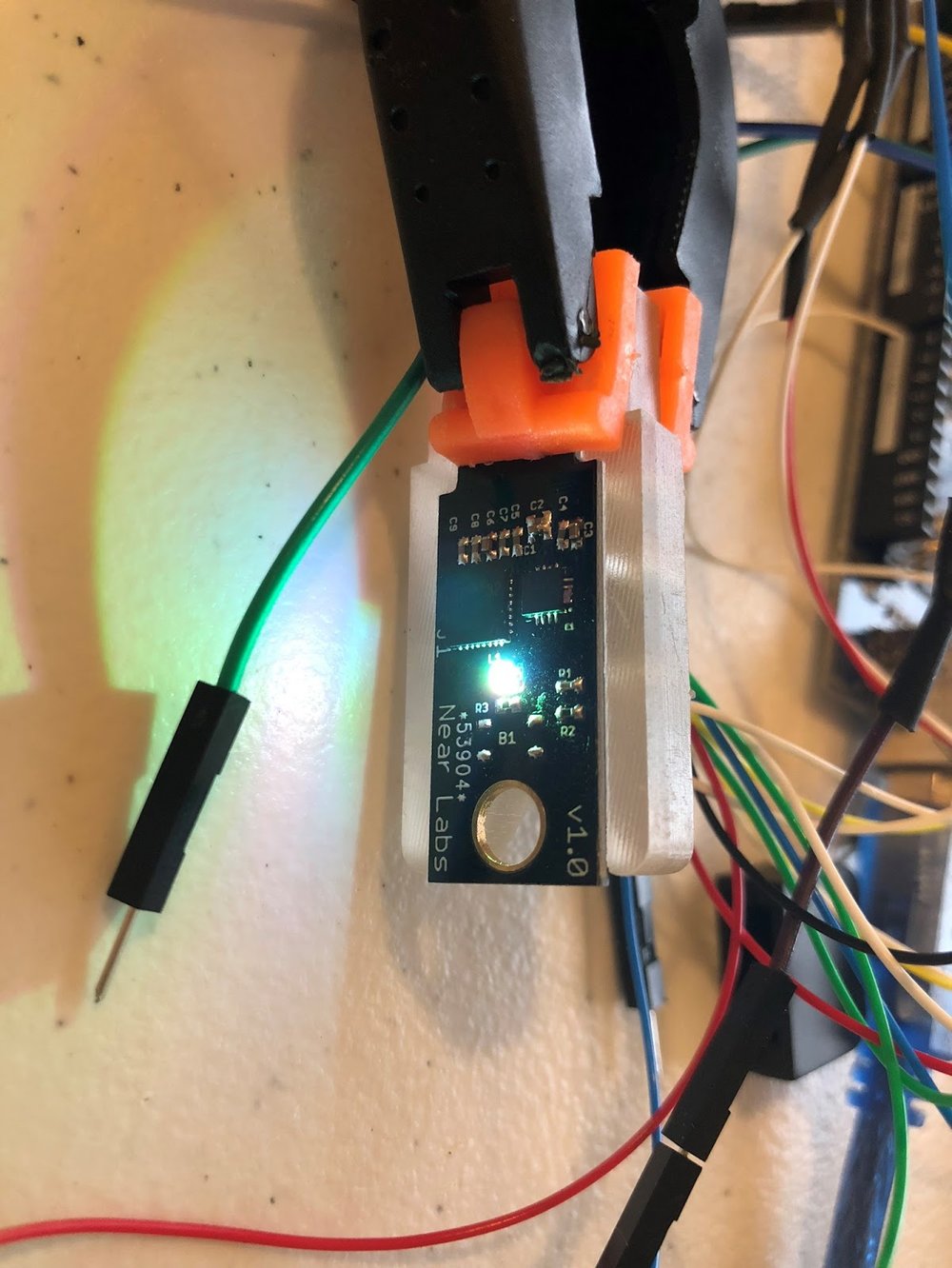
The case
We want our device to be something people like to use and carry around (unlike most 2FA options out there). So getting the look and feel of it right is important.
We have two designs for the case. One can be printed on a SLA printer ($2.50 from DirtyPCBs), and the other we are getting professionally molded. Both designs take advantage of a thin mechanical button that provides nice tactile feedback.
The additively manufactured design allows people to produce their own. It consists of a top and bottom piece that snap together over the circuit board. The bottom piece also removes the 2mm requirement for PCBs.



The molded design will be a semi-hard silicone “sock”. It will be pocket-friendly, nice to hold, and allow embedded mechanical button to be used. Multiple colors can be offered.
The design is still being iterated on and current photos are from a 3D printer.


USB-C
Two versions of the PCB will be produced to support USB-A and USB-C connectors.
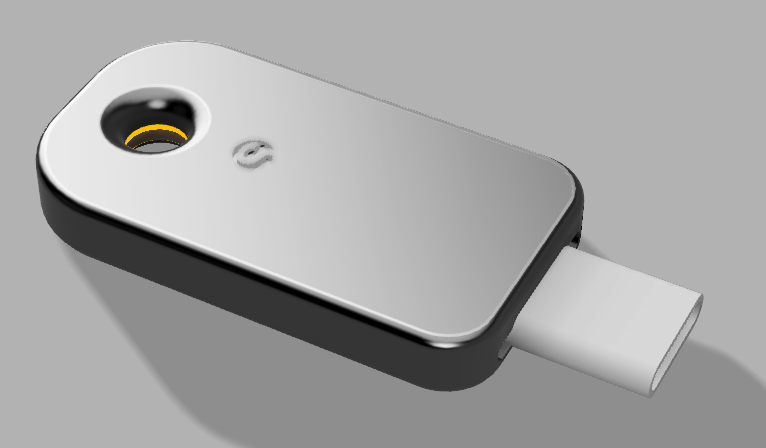
We will aim to re-use the same case for USB-A and USB-C.
NFC Support
For a long time, I thought passive NFC support wasn’t going to work out. The only MCUs out there that can run passively on an NFC interface, and communicate bidirectionally, are aforementioned forbidden security chips. But there are a couple of chips out there that just provide an NFC interface, and an energy harvesting capability.
The AMS 3956 is one good example. AMS 3956 is extra special because it allows for NFC type 4 emulation, a requirement for U2F/FIDO2. Other energy harvesting ICs, like the NXP NT3H2111, just implement NFC type 2.
It is also critical to use a low-power MCU to pair with the AMS 3956, like the silabs EFM32J, because the harvested NFC power is pretty low, around 3-5 mA at 3V in my tests.
It will still take more design effort to finish the NFC version. Some low level NFC communication details need to be implemented, and the coil needs to be designed and tuned.
Signed firmware updates through browser
Signed firmware updates are supported via an extension to the U2F/FIDO2 protocol. No extra software needs to be installed. In case any critical bugs are discovered, it will be very easy to update.
Users will be able to get any new features added by me or the community. Developers will be able to reprogram the firmware using a hardware debugger.
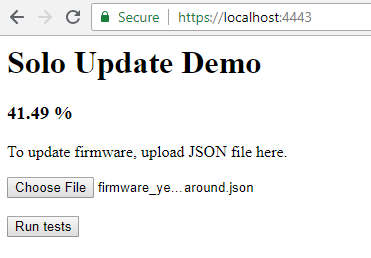
Kickstarter
We need some funding to be able to bootstrap this. To make this project affordable, i.e. reaching scale on both the PCBs and molded case designs, we would like to be able to order 10,000 units. We could get away with like 3000, but our numbers really start to look sustainable at 10,000.
A successful crowdfunding campaign would really help get this project on the market. We would need a minimum of 1000 backers, but we really start to shine if we can get around 4000. Assuming an average 2.5 “base” units per backer, we could reach our 10,000 units sold goal.
From there, we would be in a great place to continue working on making a great 2FA/1FA device for the masses.
Update: Our Kickstarter ended you can see the product version here.